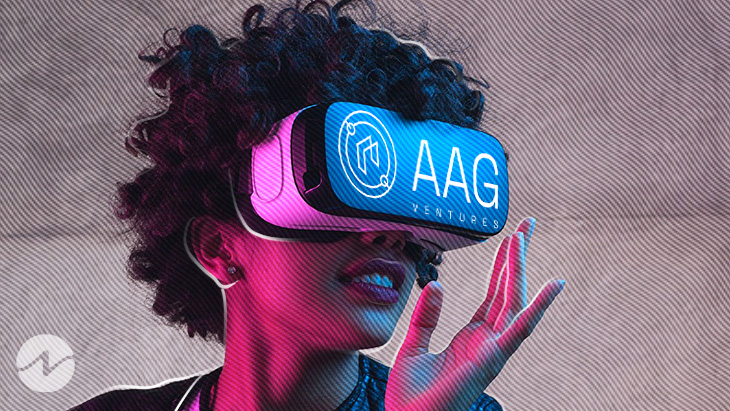Virtual paradise, parallel universe, a replica of the real world, an escape from the dystopian reality, an interoperable virtual world, and what not! The ‘Metaverse Mania’ is growing huge amid the technophiles.
The real-world experiences are replicated and enhanced as virtual versions in the metaverse. People are beginning to go head-over-heels for the immersive experience the metaverse provides.
Meta founder, Mark Zuckerberg describes the metaverse as the “second-best thing to teleportation”. Metaverse turning into a wild hype is about to gain a faster momentum. Let us dive in to get a deeper insight into this mesmeric technology.
What is Metaverse?
Metaverse is still an ambiguous concept. This developing concept holds several definitions in the virtual space. Simply put, Metaverse is a 3D virtual world created as a replica of the real world on blockchain technology. It is a collaborative network of 3D virtual worlds, existing as a parallel virtual universe.
The term ‘Metaverse’ was first coined by Neal Stephenson in his 1992 Sci-Fi Novel, Snow Crash. He used this unique term to describe a virtual world that existed in the imaginative future of the novel’s protagonist. He described it as a virtual paradise in the 21st-century dystopia.
Thus, the metaverse is an umbrella term that encompasses gaming, virtual reality (VR), augmented reality (AR), cryptocurrencies, NFTs, and other elements of web3.
How is Metaverse different from VR/AR?
Virtual Reality (VR), Augmented Reality (AR), and Mixed Reality (MR) collectively belong to the broad category of extended reality (ER). Metaverse does not exactly represent these technologies. It is a more evolved and upgraded version of VR, AR, MR, Internet of Things (IoT), and artificial intelligence (AI).
Virtual Reality (VR) is the technology that lets us immerse in the virtually created world through the VR headsets. VR projects the elements and scenes of the real world onto the virtual world. OculusVR is one popular example of VR.
Augmented Reality (AR) represents the technology that projects elements of the virtual world onto the real world. AR uses the real world as its framework. AR-based games and tech also use specialized AR headsets such as Microsoft HoloLens.
Pokemon Go is a viral AR game that invaded the gaming industry in 2016. The avatars of the game were integrated into the scenes of the real world that were captured live on the devices. There is an additional technology called Mixed Reality (MR) which is an upgraded version of AR.
History of Metaverse
The novel-based Sci-Fi movie Ready Player One gave a gist of what metaverse is and how extended reality (ER) technologies facilitate the progress of this technology. It makes us wonder when this idea of creating a parallel digital universe arose.
The idea of metaverse didn’t originate in the ’90s or the early 2000s. If we begin to track down its origin, we would end up with the Sci-Fi novels of the ’80s. Vernor Vinge’s True Names in 1981 and William Gibson’s Neuromancer in 1984 presented the theoretical possibility of a world in cyberspace. Cyberspace can be regarded as the pioneer for proto-metaverses.
If you ever got a chance to hang out with your digital avatars in the virtual nightclub at Habitat. Congratulations, you have experienced a metaverse-like world early in the late ‘80s! This 1986 computer reality game emphasized the significance of digital avatars. A Commodore 64 computer, dial-up modems, and telephones were all that were needed to access this virtually simulated game.
LucasArts, former Lucasfilm Games, creators of Habitat quoted:
“A multi-user environment is central to the idea of cyberspace.”
The following tweet from a game maker projects a framework from the 1986 Habitat game:
Today I took my class on a field trip to Habitat, the first graphical MMO from ~1985.
— Paolo Pedercini (@molleindustria) September 18, 2020
We even came across the developers of the restored version (@neohabitatproj) which is playable from the browser:https://t.co/62GBXN4FG2 pic.twitter.com/0hq7r5a01O
Online simulated games, especially the massively multiplayer online role-playing games (MMORPGs), paved the way for the advancement of cyberspace and the emergence of proto-metaverses.
The 21st century marked the beginning of remarkable evolutions in the internet and gaming industry. The transition of the world wide web (WWW) into Web2 in 2004. This first iteration of the web allowed users to experience the perks of a user-generated web that supports interactivity and social connectivity.
Web3, the second iteration, is a blockchain-powered internet. The adoption and development of this version have been gaining significant momentum. A decentralized database and artificial intelligence (AI), especially machine learning, are incorporated into Web3.
Likewise, a simultaneous evolution in the gaming industry commenced. In 2000, the Sims emerged as a virtual game that hosted suburban infrastructure in a virtual city. The digital avatars of the users get to inhabit the SimCity, build homes, find jobs and socialize with people. SecondLife, an online multimedia platform, gained popularity in the mid-2000s. This was launched in 2003 and avatars of the users occupied these virtual spaces. This highlighted the perks of socializing in a 3D virtual world.
Popular games like Fortnite, PUBG, Roblox, and Minecraft set their foot in the metaverse and created their own version of metaverses.
The COVID pandemic became a crucial phase for the boom of ER and metaverse. As we were confined indoors and restricted from having contact with the outside world, the virtual space was only the major aid.
Metaverse and related 3D virtual worlds enabled people to connect and socialize with the rest of the world. It made entertainment and other socializing activities possible in virtual reality. True metaverses are still under construction. Many play-to-earn (P2E) and MMORPG games are setting up metaverses to provide an immersive experience to players in the 3D gaming arena.
Facebook purchased Oculus VR in 2014 and has continued to enrich the development of cyberspace into the metaverse. Facebook’s rebranding as Meta in 2021 emphasized the firm’s ambitious goals toward developing the metaverse.
What Roles Do Cryptos and NFTs Play in Metaverse?
Cryptocurrencies are deployed as the native currencies of the virtual economy created in the metaverse. It allows users to create custom-made infrastructure, objects, or services in the metaverse. Importantly, crypto coins and tokens serve as the prime mode of exchange and store of value used in trading activities in the metaverse. In certain crypto-related metaverses, users are required to pay in cryptos in order to enter the metaverse.
Famous metaverse coins and tokens
There are numerous other altcoins linked to the metaverse economy. As more and more metaverses are being set up, several coins and tokens would emerge in the market.
Non-fungible tokens (NFTs) are the assets that beautify the environments in the metaverse. These 100% unique digital assets represent the avatars, architectures, plots of land, and other objects in the 3D virtual world. Users earn passive incomes on NFTs too. For instance, users can rent their plot of land in any metaverse and earn cryptos on it. In Decentraland, a virtual reality platform in DeFi, LAND is an NFT that represents plots in this metaverse.
These blockchain-powered assets render proof of ownership to the users of the metaverse. Decentralization, immutability, and interoperability are conferred to metaverse through these digital assets.
The Use Cases of Metaverse
Real Estate in Metaverse
The booming real estate industry dominated the metaverse by luring investors to invest in virtual plots. Cryptovoxels, Decentraland, The SandBox, and Shibaverse are popular metaverses where avatars inhabit the virtual plots. The real estate industry has integrated onto the metaverse world.
Socializing and Virtual Events
During the pandemic, most real-world events commenced via the virtual world. The gaming platform, Fortnite, enabled pop stars to organize their music concerts in the virtual world. In February 2019, Marshmello held his virtual concert and in April 2020, Travis Scott also appeared as a virtual avatar and organized a virtual concert with 12 million spectators.
Thank you to everyone who attended and created content around the Travis Scott event!
— Fortnite (@FortniteGame) April 27, 2020
Over 27.7 million unique players in-game participated live 45.8 million times across the five events to create a truly Astronomical experience. 🤯🔥 pic.twitter.com/LSH0pLmGOS
Virtual 3D Tours
Shopping is given a peculiar perspective through the metaverse. Users can venture into the shops and explore the products virtually without having to travel to the venue. Traveling to desirable destinations and imaginative lands is made possible. Events like weddings and other hangout events can be facilitated via metaverse.
Metaverse – The New Future Of Work
The regular Zoom meetings or video calls give a 2D and a non-immersive experience to its users. While a meeting in metaverse would feel a lot different and more immersive. Interactivity is upgraded and there is no confinement.
Analyzing the Darker Side of Metaverse
Metaverse is seemingly the fascinating technology that we are curiously exploring. This so-called parallel universe emerges to be an enhanced version of the real world. Despite these lucrative advantages, it still has unpleasant cons. Metaverse fails to protect the users’ privacy, safety, and security. The illicit crimes and violations happening in this virtual ecosystem cannot be regulated.
Andrew Bosworth, CTO of Meta commented:
“Policing user behavior at any meaningful scale is practically impossible.”
Gaming has gone mainstream and persuaded nearly 30% of the world’s population into it. Majorly, Children and teens are active participants in the industry. The content consumed via the metaverse-based games has a terrible impact on the emotional and mental state of the participants.
Murders, sexual assaults, verbal abuse, and illegal stalking are committed in metaverses and are not subjected to any laws. Victims are pushed down to live in fear and terror. This draws in major concerns towards this unregulated space. All of these trigger a backlash on metaverse from several groups, especially a few policymakers.
What is the Future of Metaverse?
Can Metaverse transform into a trillion-dollar economy just like the crypto market? Tech giants, venture capitalists, and even governments continue to bet on this question.
Several entities have begun foraying into the metaverse territory by significantly investing in it. Dubai’s Virtual Assets Regulatory Authority (VARA) set its headquarters in the metaverse. Thailand’s Siam Central Bank also opened its headquarters in the SandBox metaverse. Notably, the South Korean government set aside a $200 billion fund for the development of metaverse.
Tech giants such as Meta, formerly known as Facebook, and Microsoft began acquiring expanded reality (ER) related software firms to accelerate their journey into the metaverse.
As per a Bloomberg intelligence report, the metaverse sector was able to raise a revenue of $500 billion USD in 2020. Whilst, its foundational sectors, gaming, VR, and AR, attained $413 billion in revenue. Also, the report predicted that the industry might raise a revenue of $800 billion in 2024.
With further advancements and projects coming up, the techno-world drives to set up a multiverse of metaverses.






